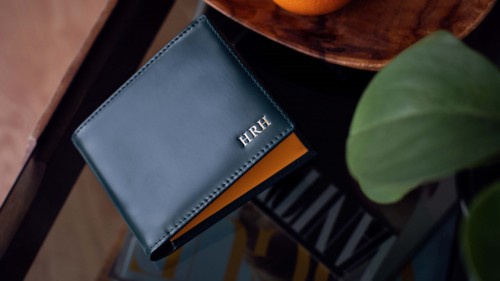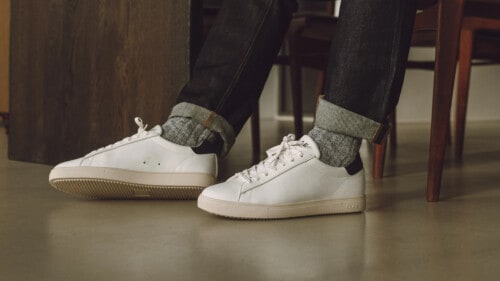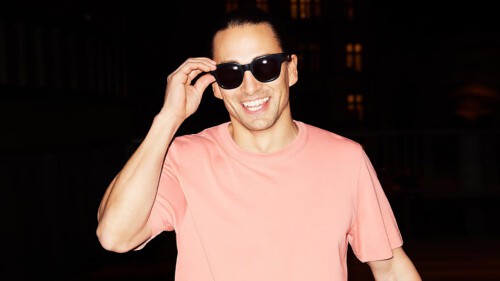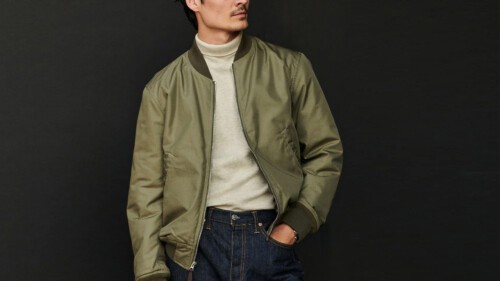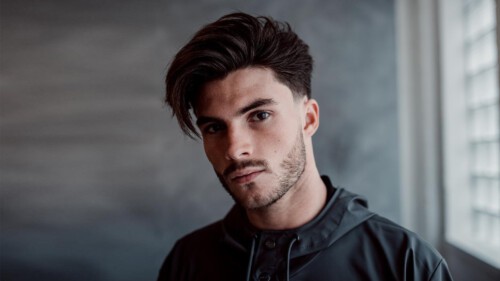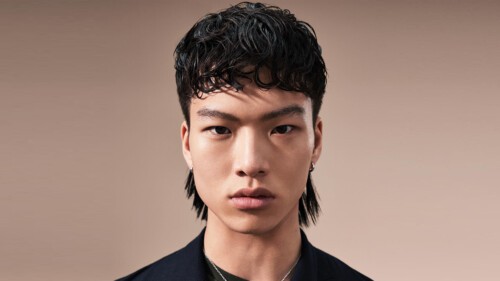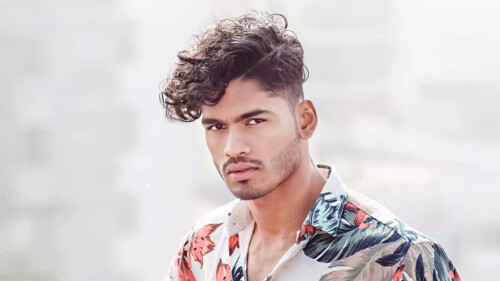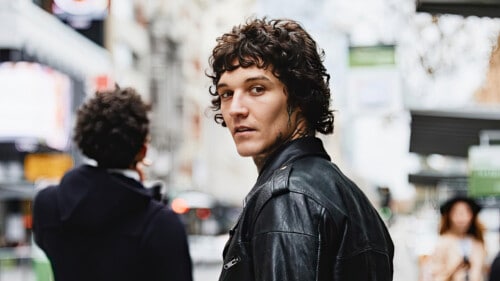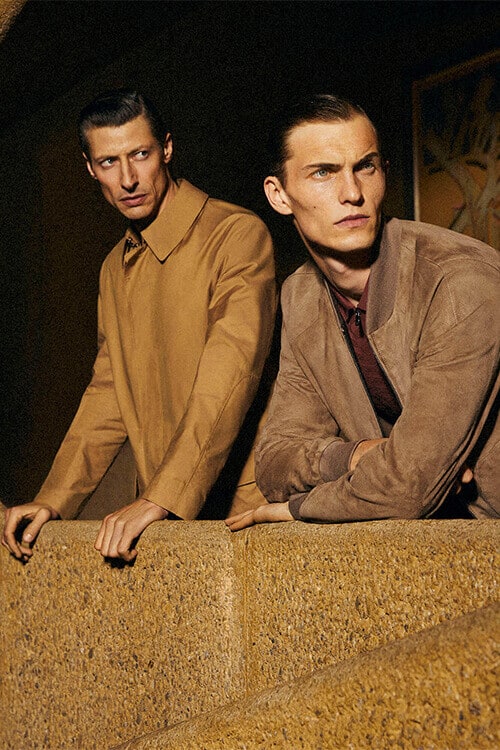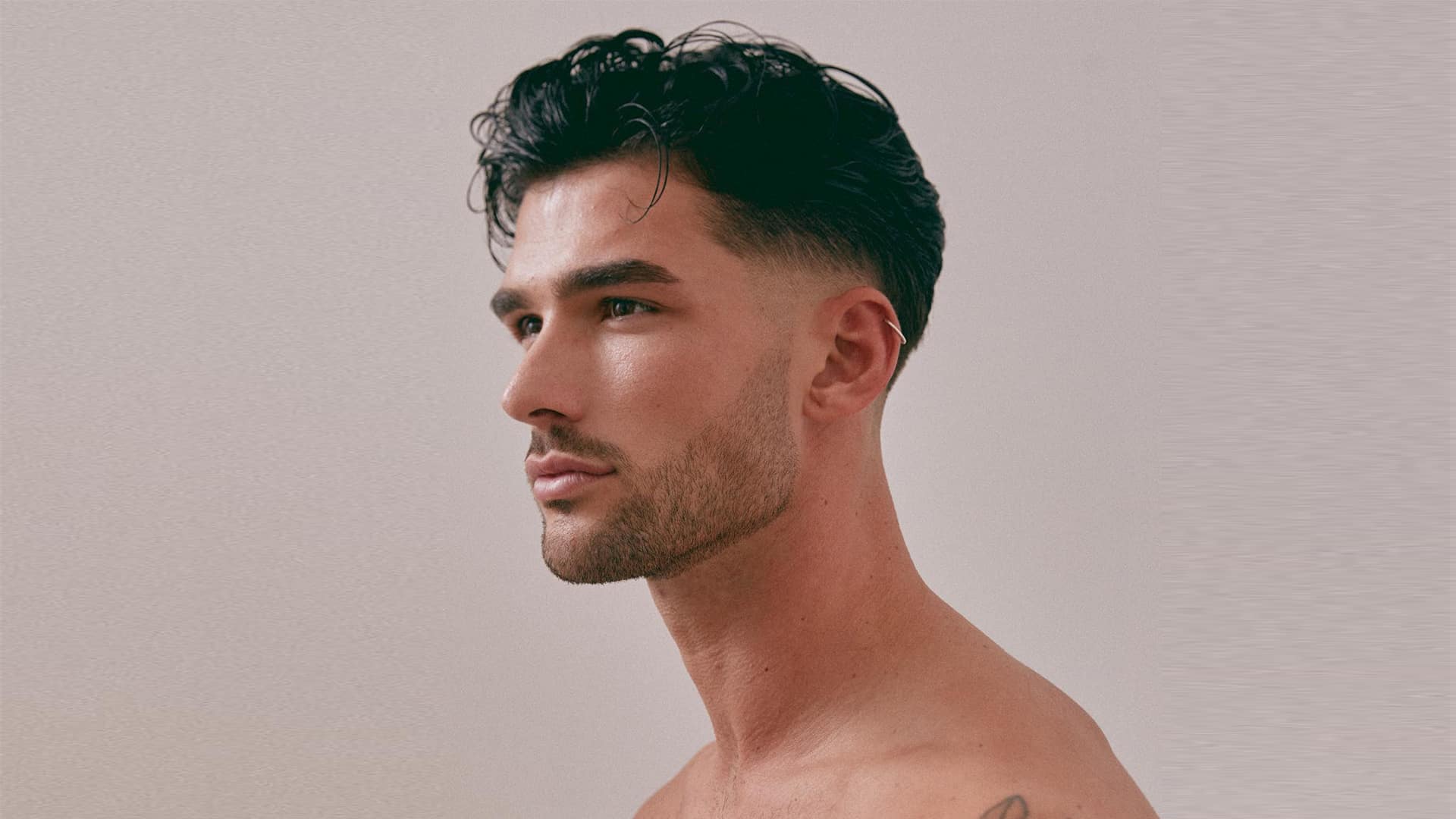
Low Skin Fade Haircut: What It Is & The Best Styles For 2024
If you're looking for a subtle, easy introduction into the world of fades, this type of cut is for you.
Long on top but gradually getting shorter until it reaches ‘skin’ level just above the ears and at the nape of the neck, a low skin fade can be applied to most hairstyles, from high top to Caesar cut, faux hawk to quiff.
Creating a sharp, clean-cut look that flatters most hair types and face shapes, it’s also a good option if you’re looking to create the illusion of thicker hair.
Keen to find out what hairstyles to team with a low skin fade and how to style them? We’ve got all the essential information you could possibly need right here.
What is a low skin fade?
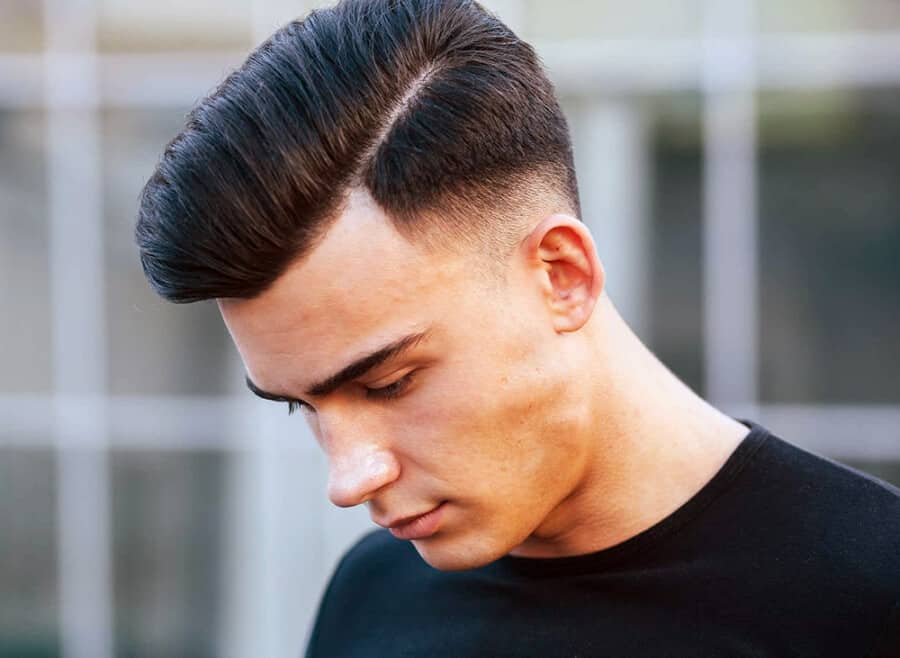
A subtle addition to any cut, this type of fade tapers lower on the head keeping a bit more weight through the top of the back and sides.
“A low skin fade is where you only show scalp exposure from very low down on the back and sides. Usually no higher than either a one- or two-finger width section, it starts from above the ear then blends into a longer length on top,” explains Dan Gregory, barber, educator and co-host of The Talking Shop podcast.
Remaining relatively even all the way round, the contrast between hair and skin exposure is much more discreet on a low fade, making it a popular choice for men who want to bring a edgy, contemporary feel to their existing style without having to stray too far out of their comfort zone.
“We have a huge demand for low skin fades and they’re very on trend right now,” says Ricky Walters, owner of Salon64 and Toppik brand expert.
“If you’ve always worn your hair longer and have never been as short as ‘skin’, even a low skin fade can feel quite extreme as it means it’s less than zero on clippers. But by keeping that length on top it adds a softness and wearability to the look.”
How to get a low skin fade
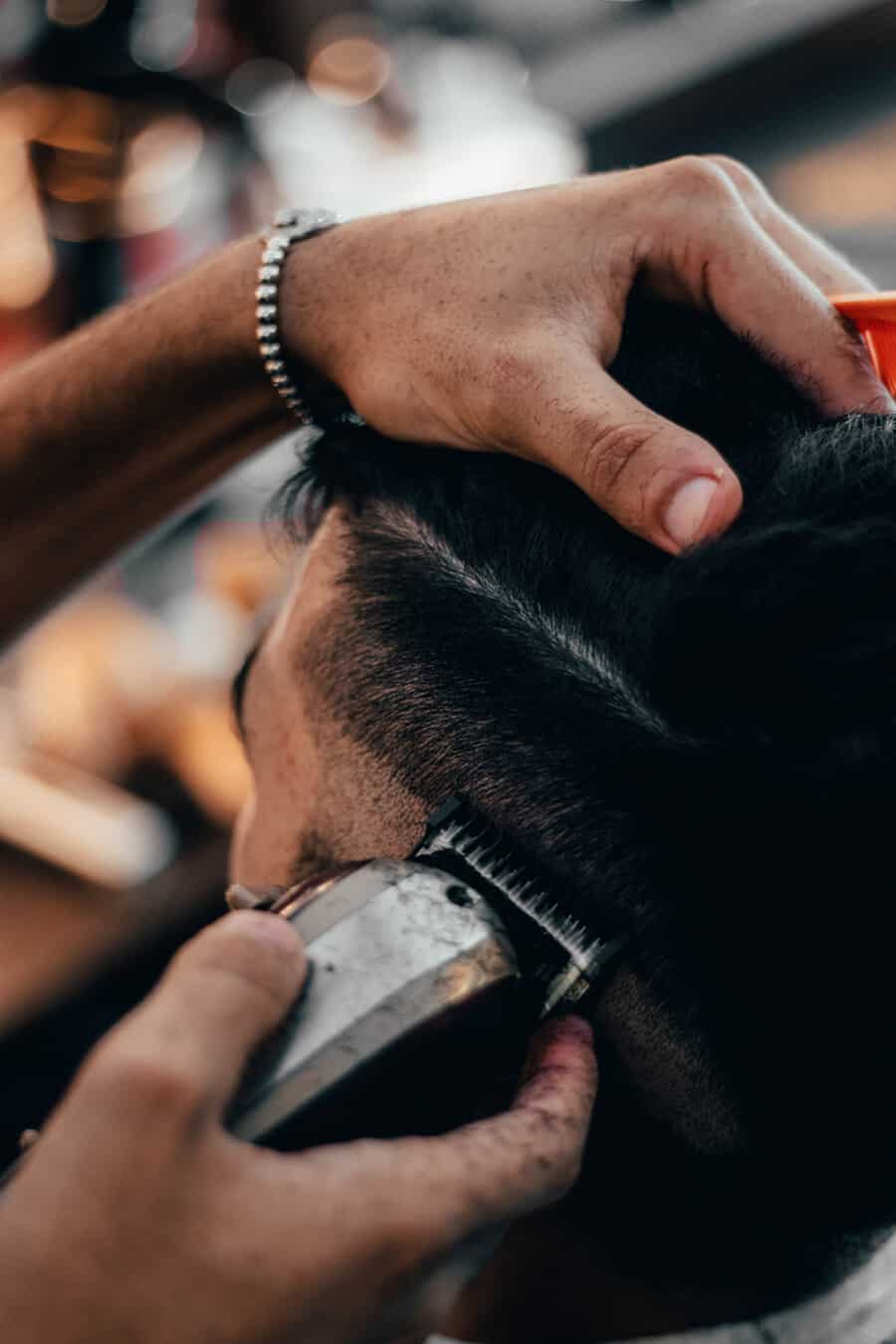
To achieve a low skin fade, Dan advises putting your base line in using a trimmer just above the ear, keeping the line low and close to the hairline from one side to the other.
“Finish the base line with your shaver to get a smooth finish, then using your clippers start from the line and work in 1cm sections – going through your levels and guards starting from a zero or closed blade, into a 0.5 or open blade.
“Work upwards in an ascending blend until you get to a two guard and then using a clipper or scissor over comb, refine it to create a smooth, seamless blend from skin to hair.
“Cut the top into your desired style then finish by detailing the hairline and temple to really give the fade that sharpness and definition.”
For a classic bald fade, Ricky also suggests asking your hairdresser or barber to use a foil machine, which gets lower than a zero.
The only word of warning from the experts: be prepared for the upkeep. “A skin fade usually grows out within a week so it’s always good to have it added into a hairstyle you’re still comfortable with a month after the cut,” says Dan.
What kind of hair does a low skin fade suit?
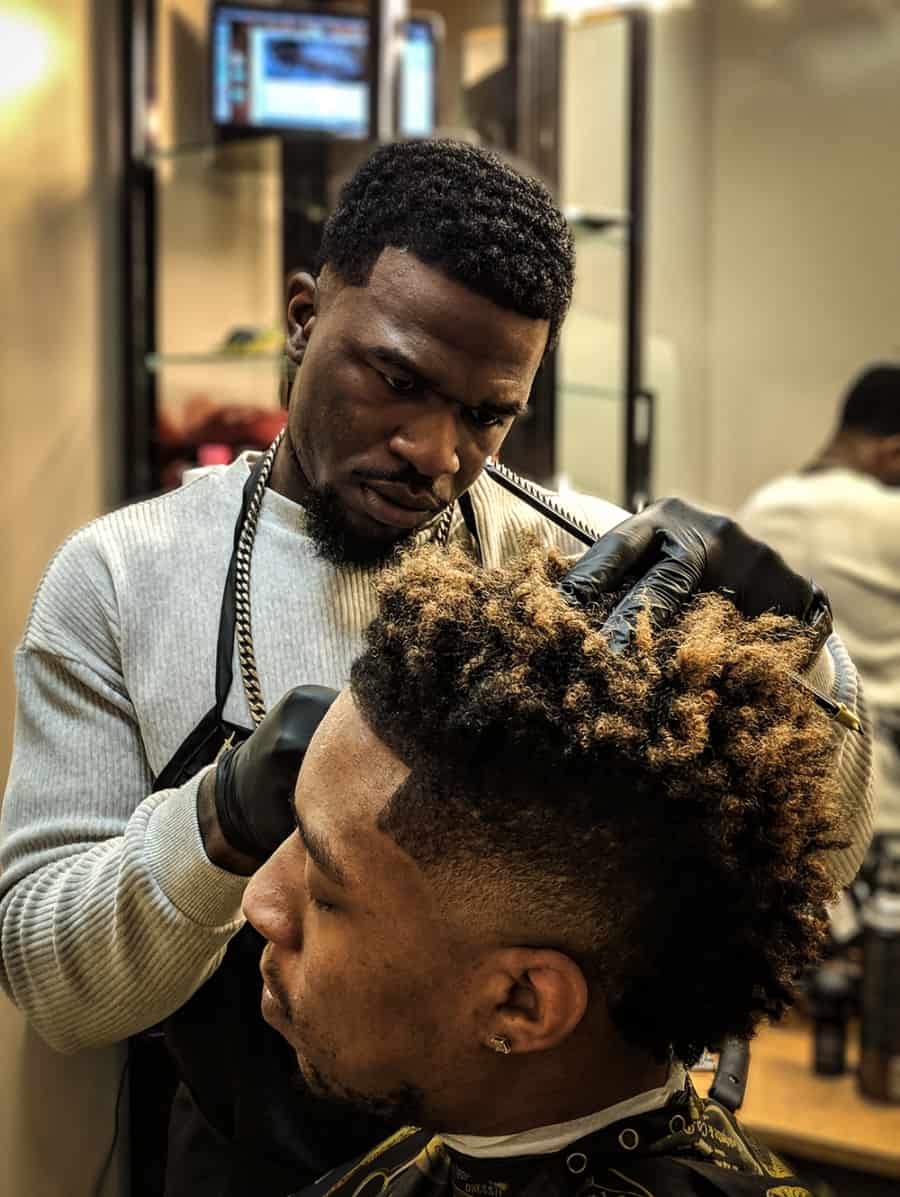
If you have super-straight, curly or thick hair on the back and sides, any form of low fade has a tendency to widen the face and head shape as it keeps more hair around the temple area. However, any skilled barber will be able to control and negate this effect.
That said, this also makes it a good option for those with thin or fine hair who want to create the illusion of it looking thicker and fuller.
What face shape does a low skin fade suit?

@criztofferson
By taking the section in line with your temples so tight, a low skin fade can help to slim the face down, which is ideal if you have a round- or heart-shaped face. This is the same reason why it might not be as flattering for those with narrow or long faces, which would benefit from a little width.
Again, a good barber will be able to tailor a low skin fade to your specific face shape by adjusting how the hair further up is cut or styled.
The best men’s low skin fade haircuts for 2024
Afro texture hair with low skin fade
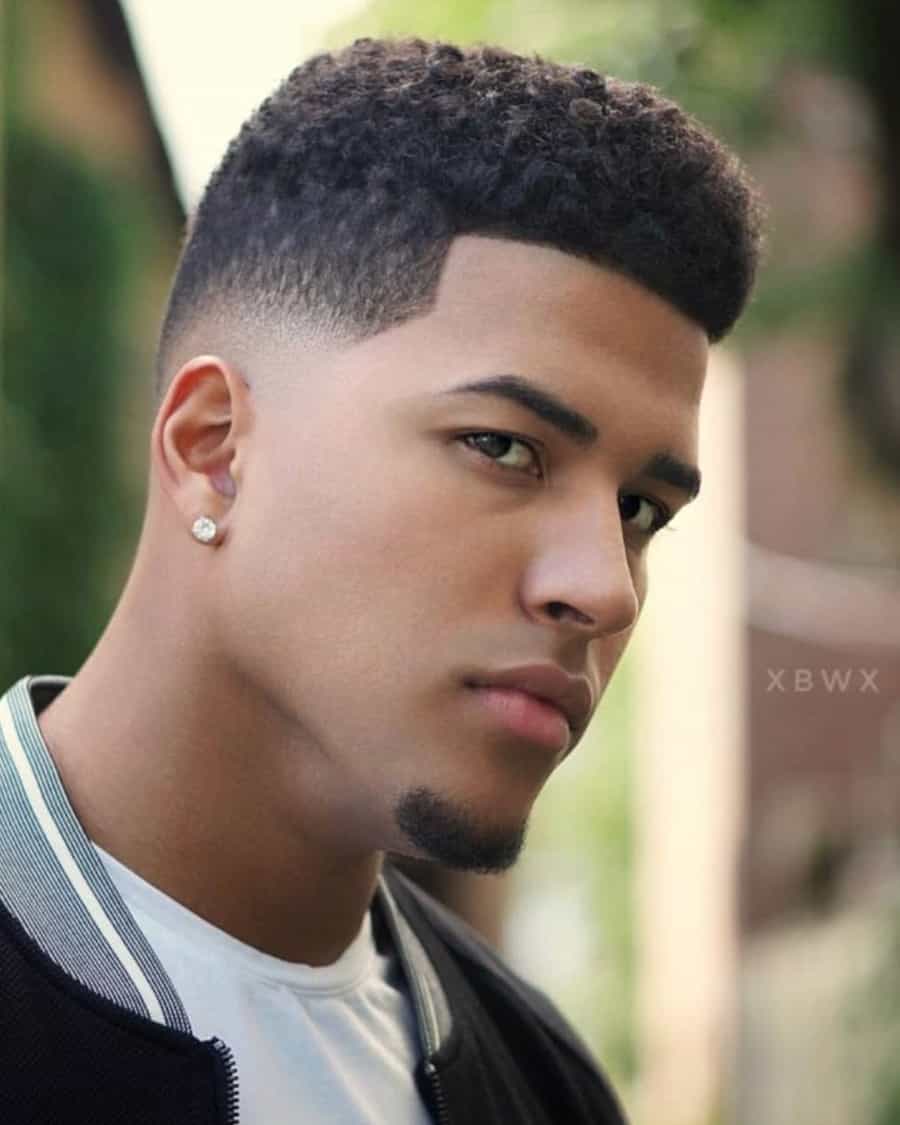
@xbigwesx
Eliminating any bulk from the short natural curls, the low skin fade adds to the clean aesthetic of this cut.
Taking all the weight out of the bottom with a fade also stops it becoming too ‘Lego head’ like and allows all focus to remain on that superb afro texture.
Faux hawk with low skin fade
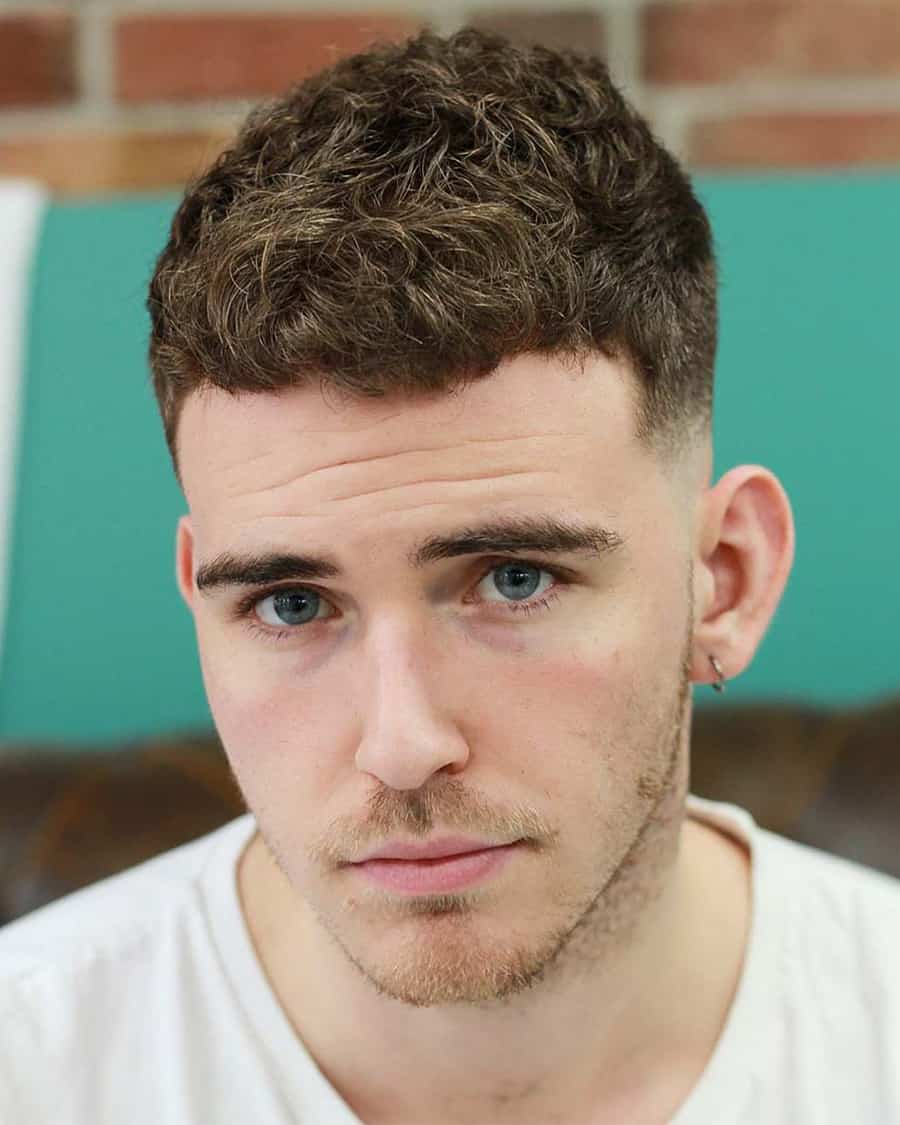
@barber_djirlauw
Brushed forward at the front into a modern faux hawk, the natural waves are kept under control here by the short tapered sides and low skin fade.
If you have textured hair like this then try applying a matte wax or putty roughly with your fingers to create that desired definition.
Leaving the hairline around the front messy and natural rather than straight and clippered helps to amplify the laid-back feel of this cut, which works in and out of the office.
Caesar cut with low skin fade
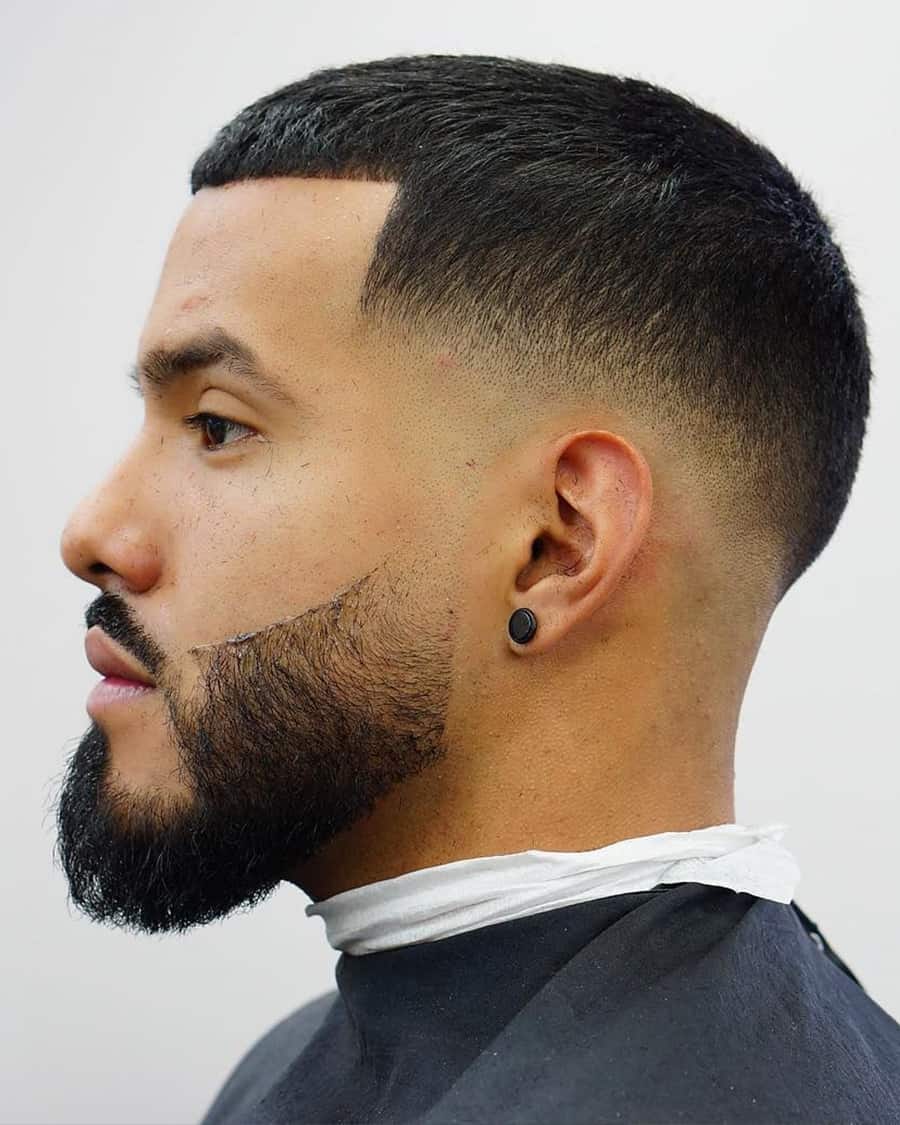
Teetering between a Caesar cut and an Edgar haircut, the short vertically cut fringe and step shape that’s brought the hairline forward makes this quite a statement look on top.
This is counteracted by the low skin fade, which not only helps soften the overall style but creates a clear separation between the strong facial hair below, too.
Afro flat top skin fade
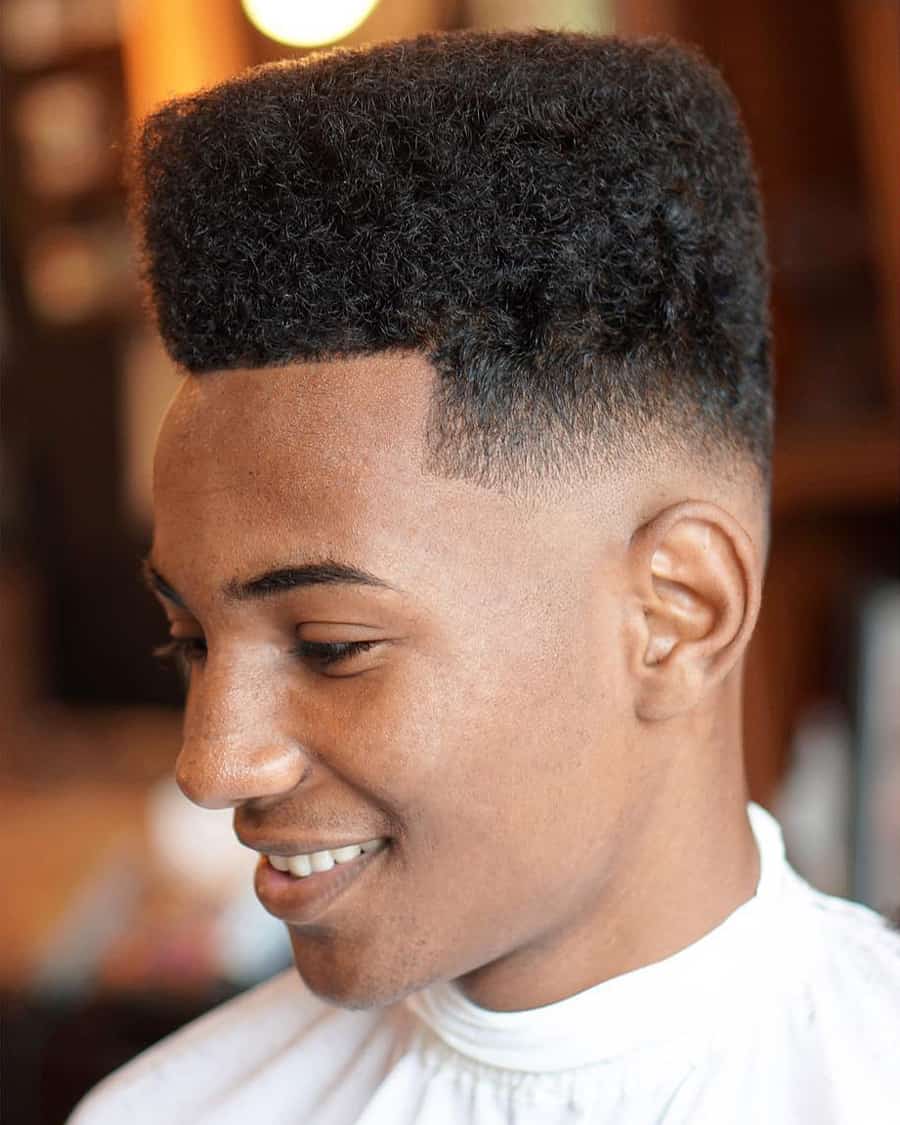
@z_ramsey
If this style was good enough for the Fresh Prince, it’s good enough for us.
A high precision box cut, the low skin fade provides balance and keeps it ‘connected’, stopping it from looking like the hair on top was stuck on.
The lack of facial hair or sideburns gives this cut even more impact too.
Textured mop with low skin fade
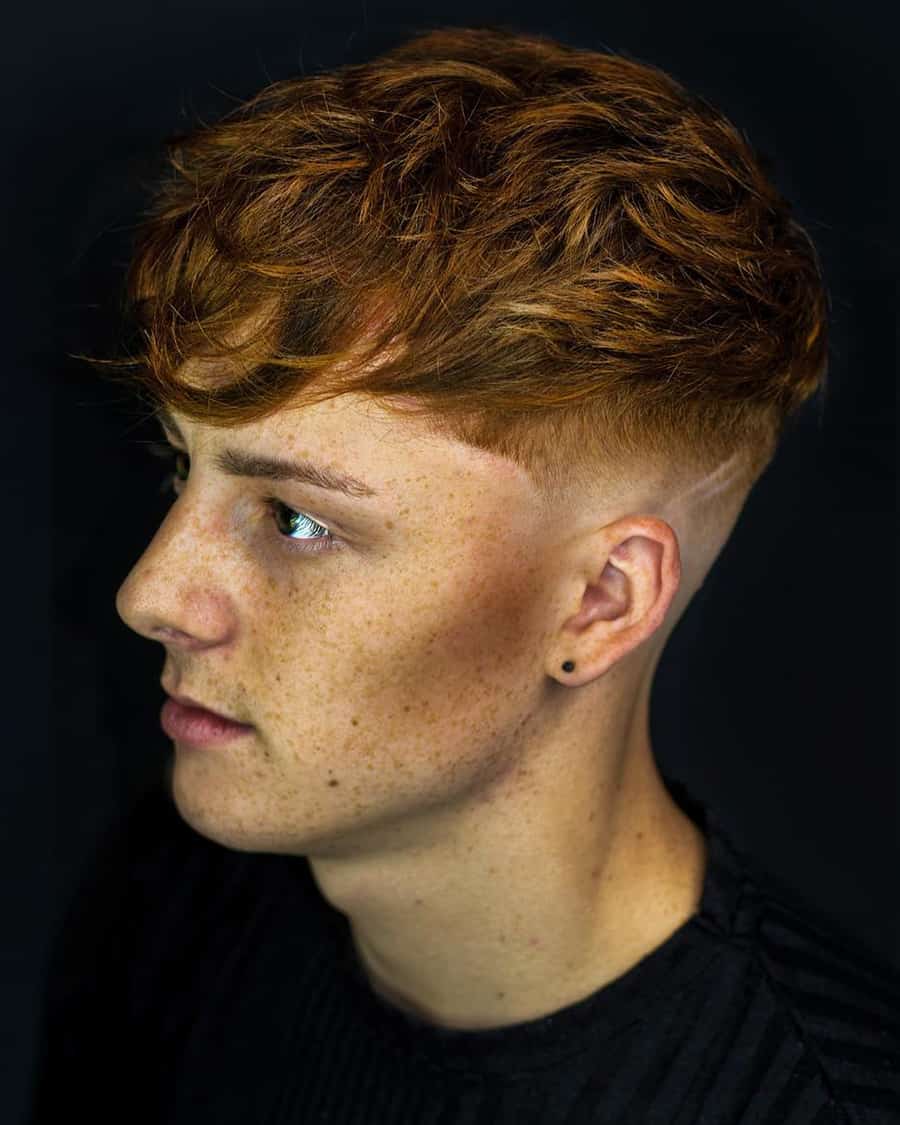
@jarredsbarbers
If you have a paler complexion and blonde/red hair it can be hard to create the same sort of definition you’d get on darker hair or skin tones where the contrast is greater.
Yet by keeping the length longer and brushing the hair forward, the messy finish gives this cut character and interest.
The barely-there line designs behind the ear also add a nice contemporary twist.
Thick textured hair with low skin fade
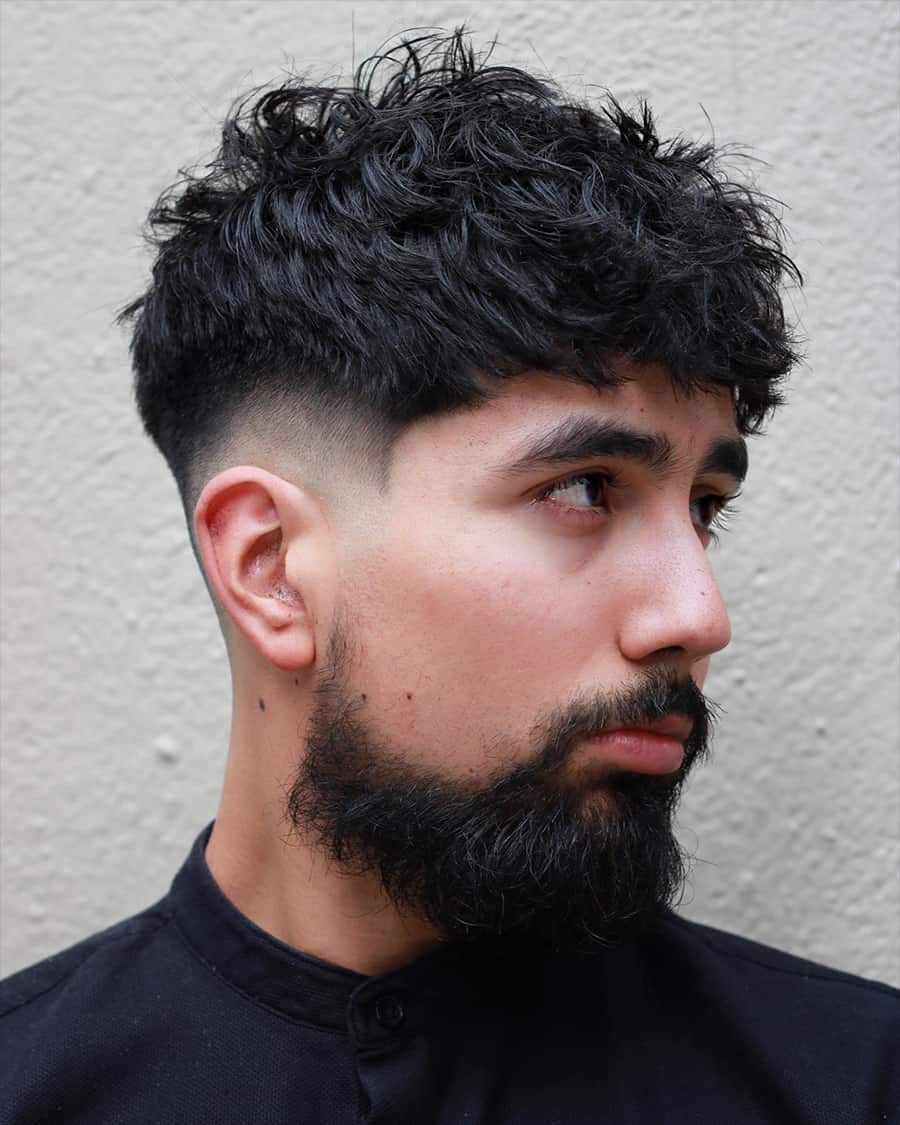
@hayden_cassidy
The perfect example of how a low skin fade is used to provide a platform for longer hair on top. The thick, black textured hair has been brushed forward and roughly styled to create a strong contrast with the skin fade around the temples, sides and back.
Keeping the facial hair longer also helps to balance out the weight on top and emphasises the skin section further.
Sweep back with low skin fade
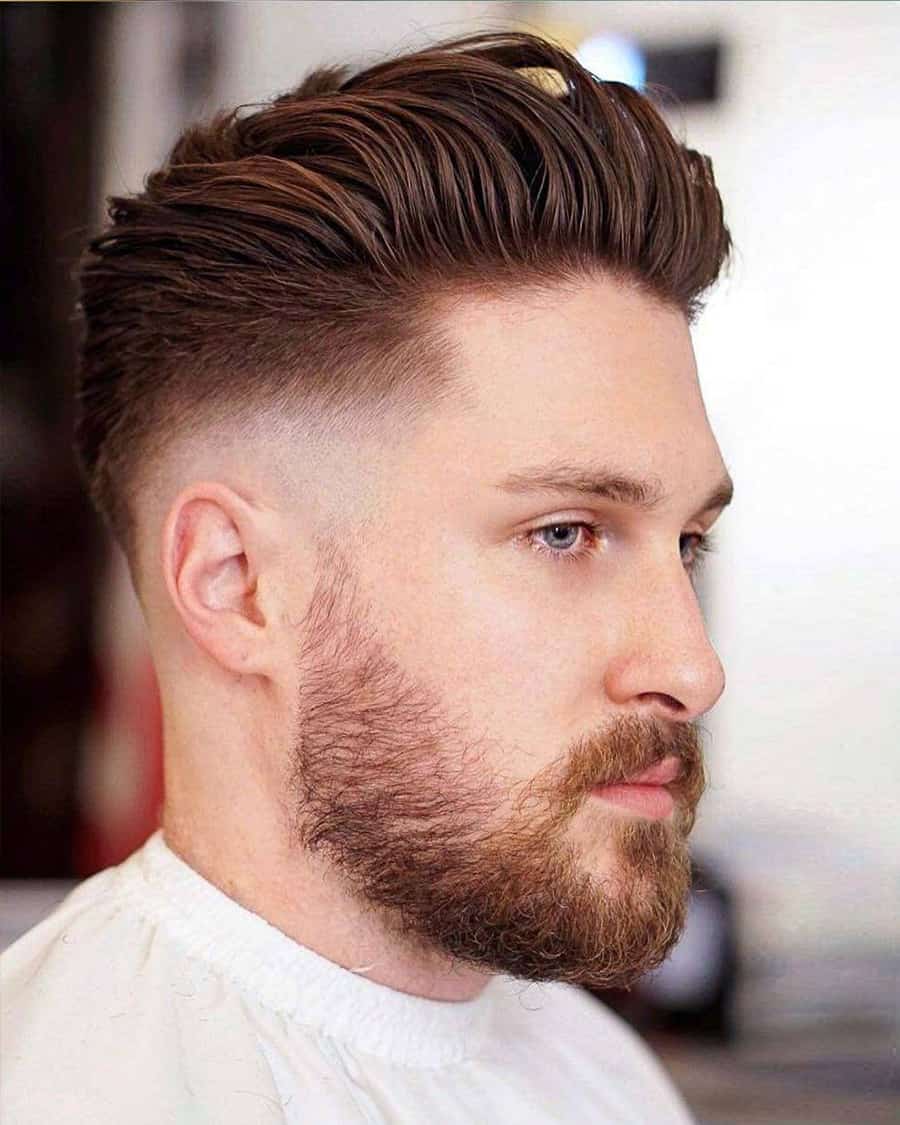
Halfway between a quiff and pompadour, this slicked back look can work with short or medium-length hair and is complemented by the low skin fade.
A smart and sophisticated way to try out the style, it would look just as good with a suit as it would jeans and a T-shirt.
Low skin fade buzz cut
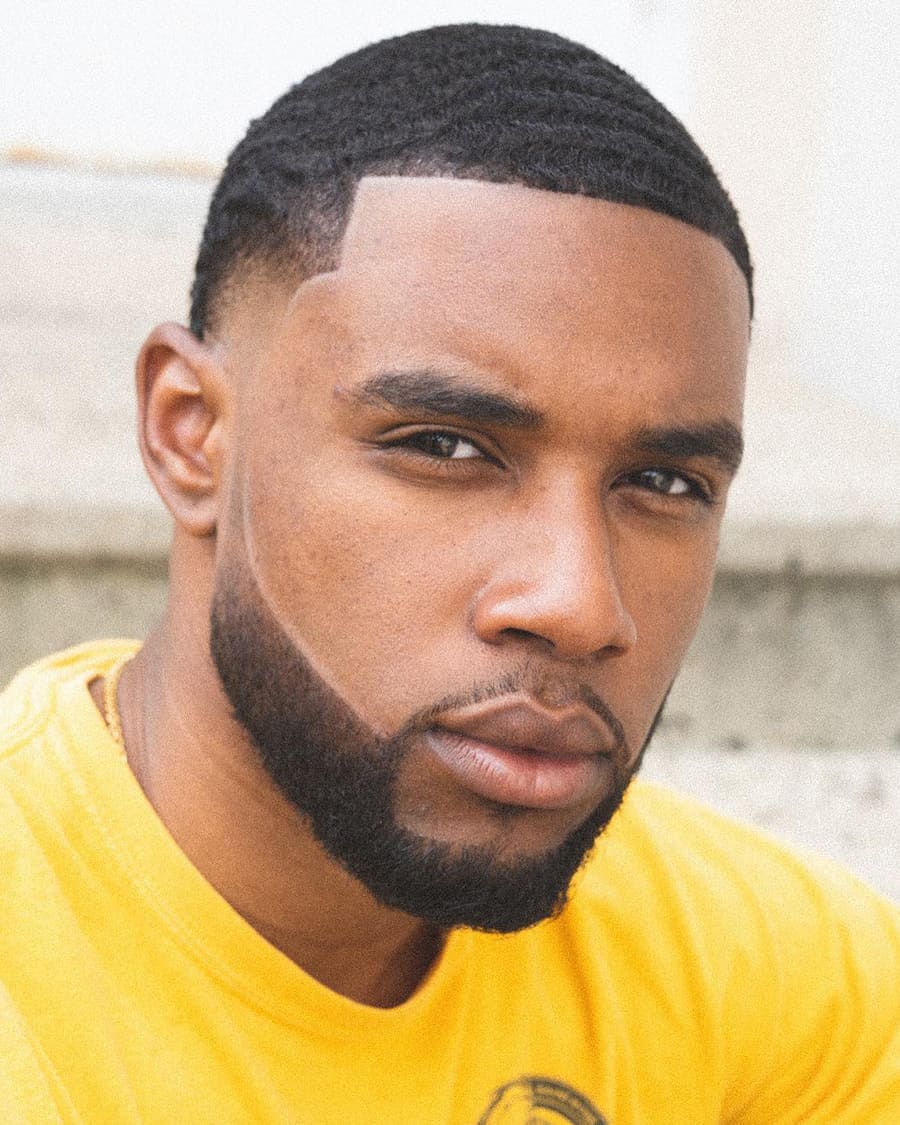
@barbershopconnect
Creating a graphic shape thanks to the buzz cut on top, natural waves and shaped beard, the low skin fade adds an element of interest to an otherwise classic men’s haircut.
Wet-look hair with low skin fade
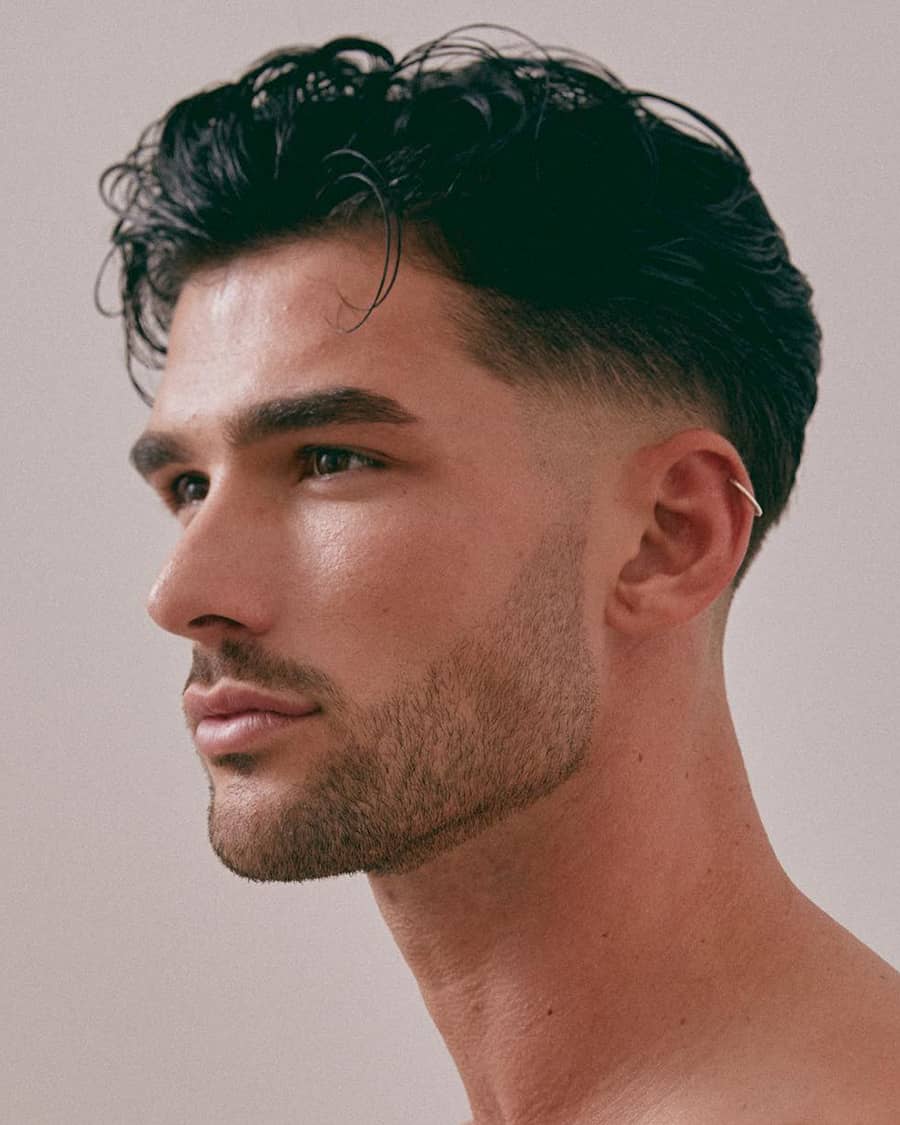
@hayden_cassidy
Starting around a centimetre above the ear and only leaving a centimetre gap at the nape of the neck, this low skin fade is as discreet as it gets. But it works perfectly as a counterpoint to the messy longer length on top, which has been styled with a wet-look product for a healthy dose of shine and texture.
Low skin fade with curly hair
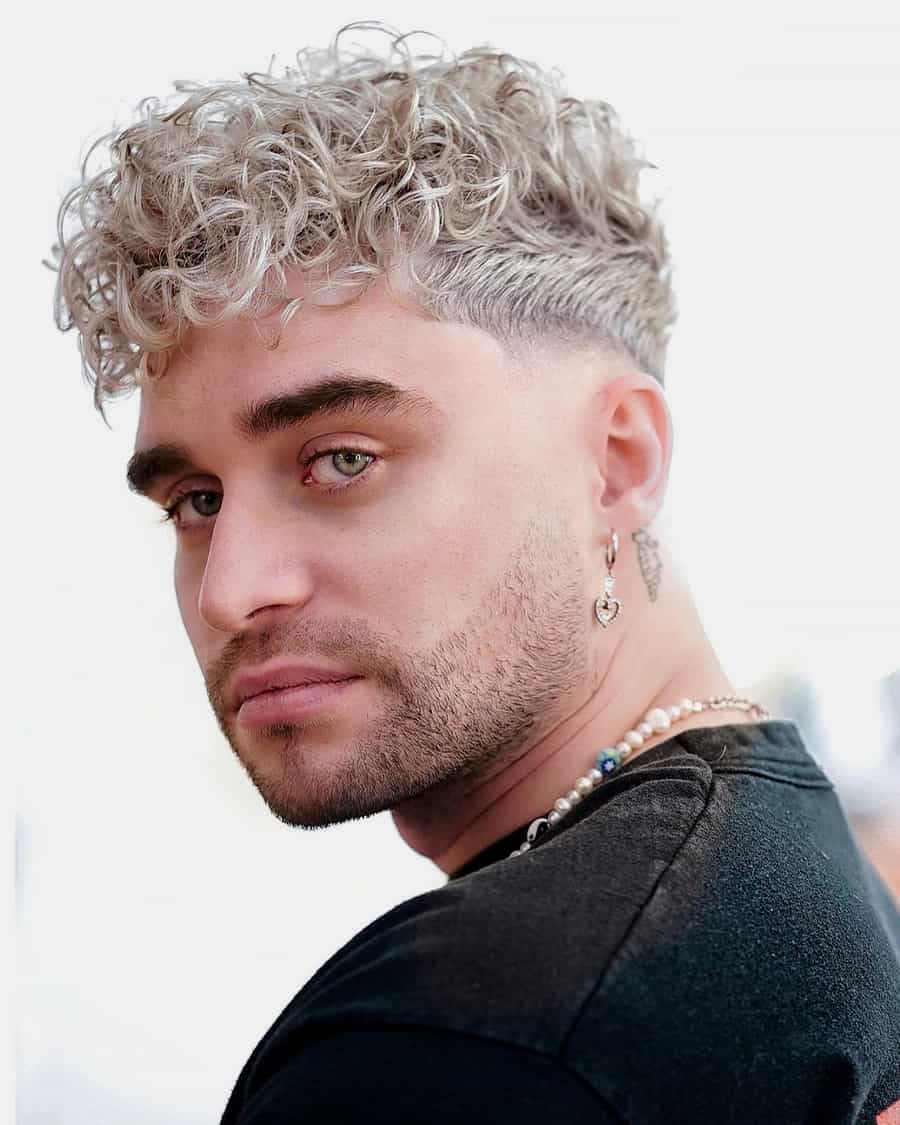
@z_ramsey
Proving that a low skin fade is an excellent option for coiled and curly hair, here it is used to remove some of the weight and density from the cut, keeping it from becoming too unruly.
Not only does it make it easier to manage and work with, by limiting the fade the lower section it also stops this style becoming too mullet-like.
Crew cut with low skin fade
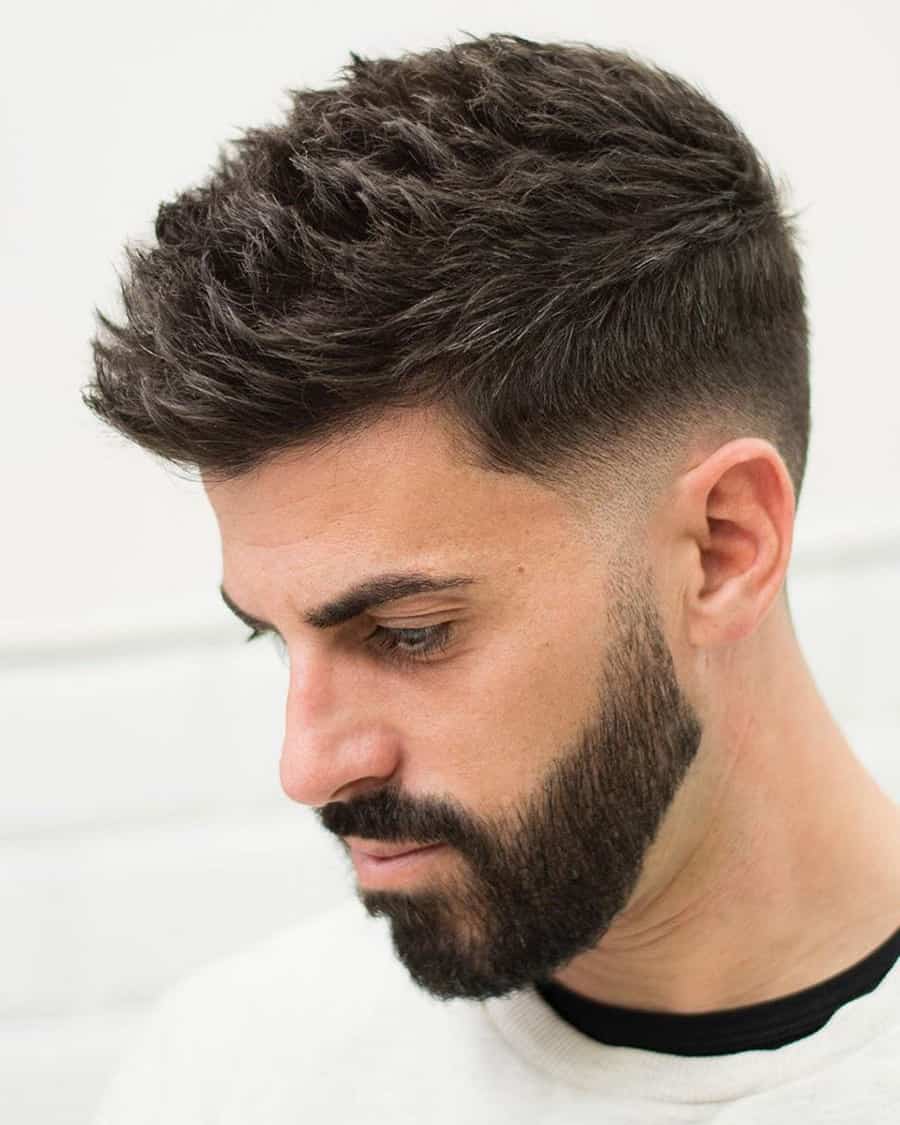
There is hardly any disconnect between the low skin fade and the facial hair here, which helps frame the model’s facial features and accentuate their bone structure.
Use a wax or paste to really define the texture of the simple crew cut on top.
Mohawk low skin fade
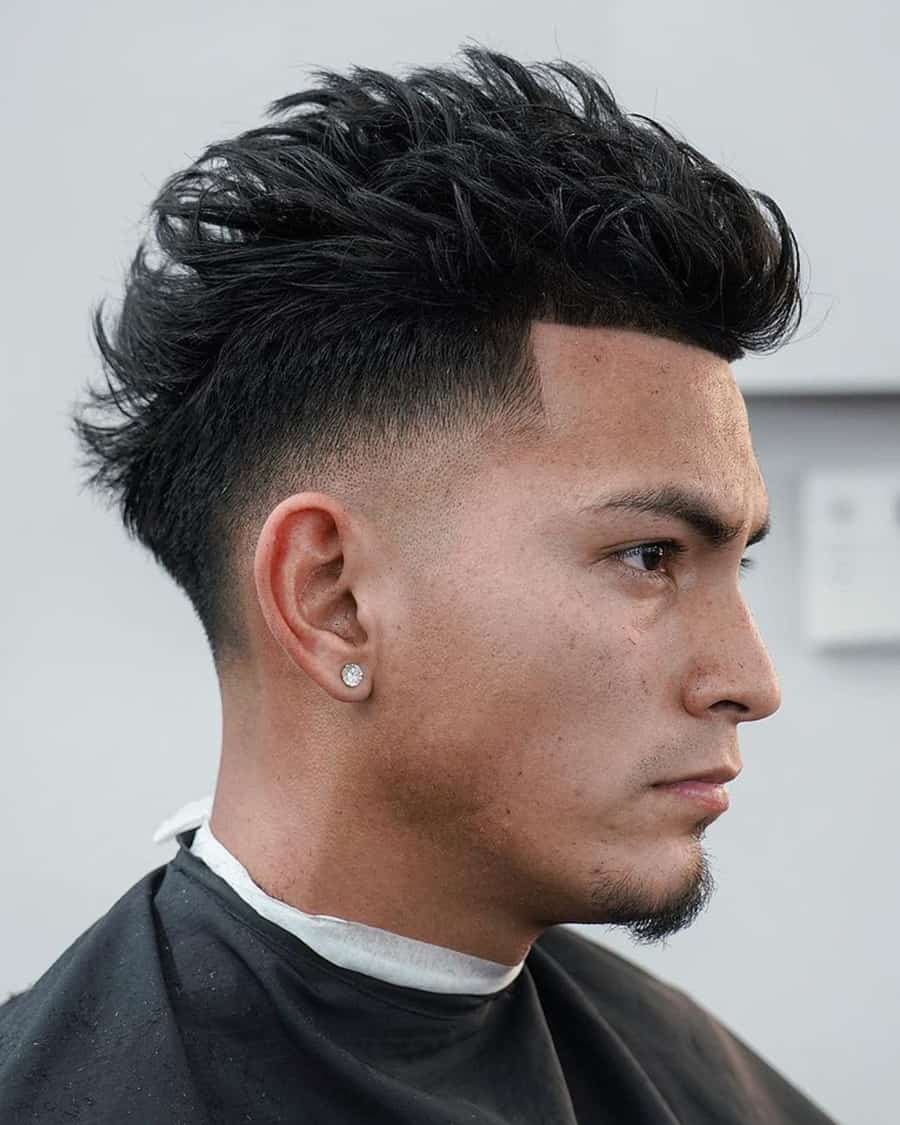
@criztofferson
A modernised take on a mohawk, the long, swept back centre section brings the drama while the faded sides and lack of sideburns accentuates the silhouette and keeps the shaping neat.
To keep a style with this much volume in place, try finishing with a flexi-hold hairspray.
Pompadour with low skin fade
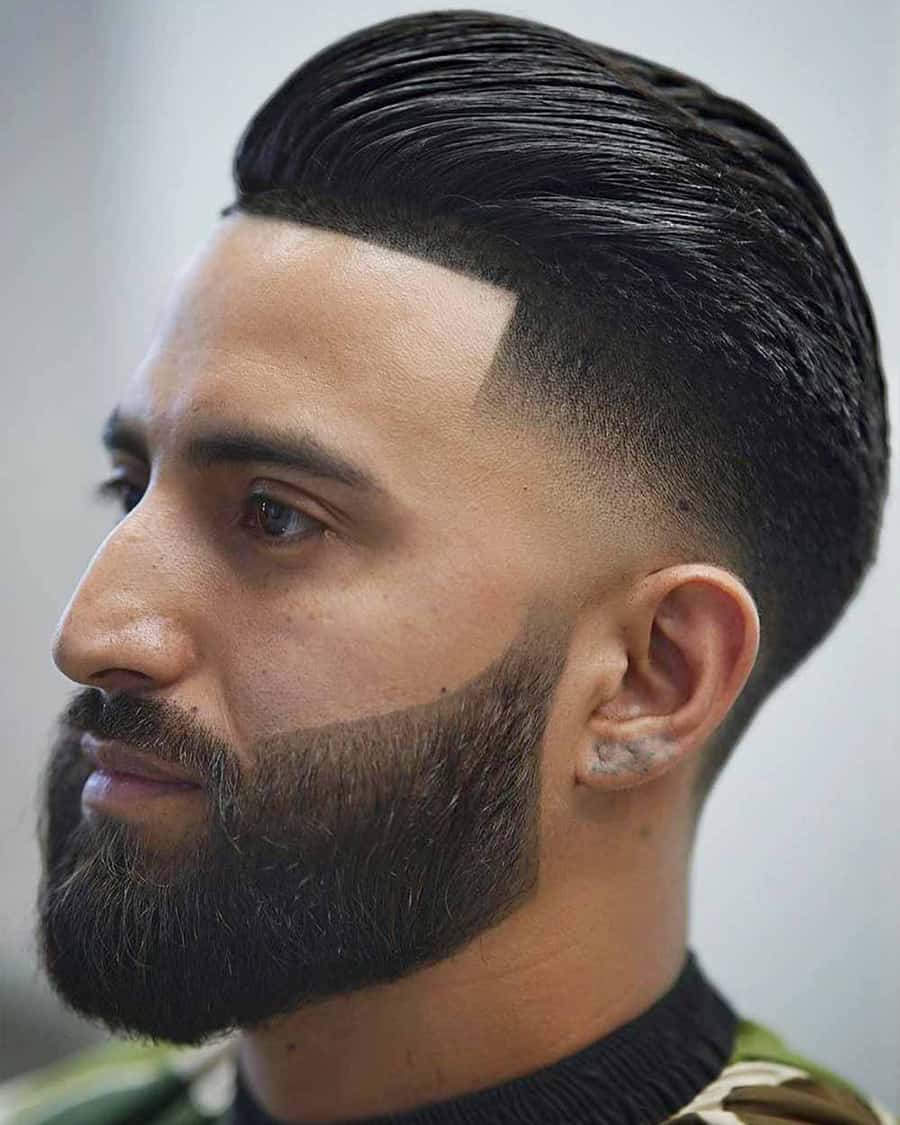
The straight line precision around the hairline is super sharp and emphasised even more so by the longer swept back pompadour on top.
The same clipper work is used to edge the facial hair, creating a neat and defined finish that looks deliberate and links everything together.
Twists with low skin fade
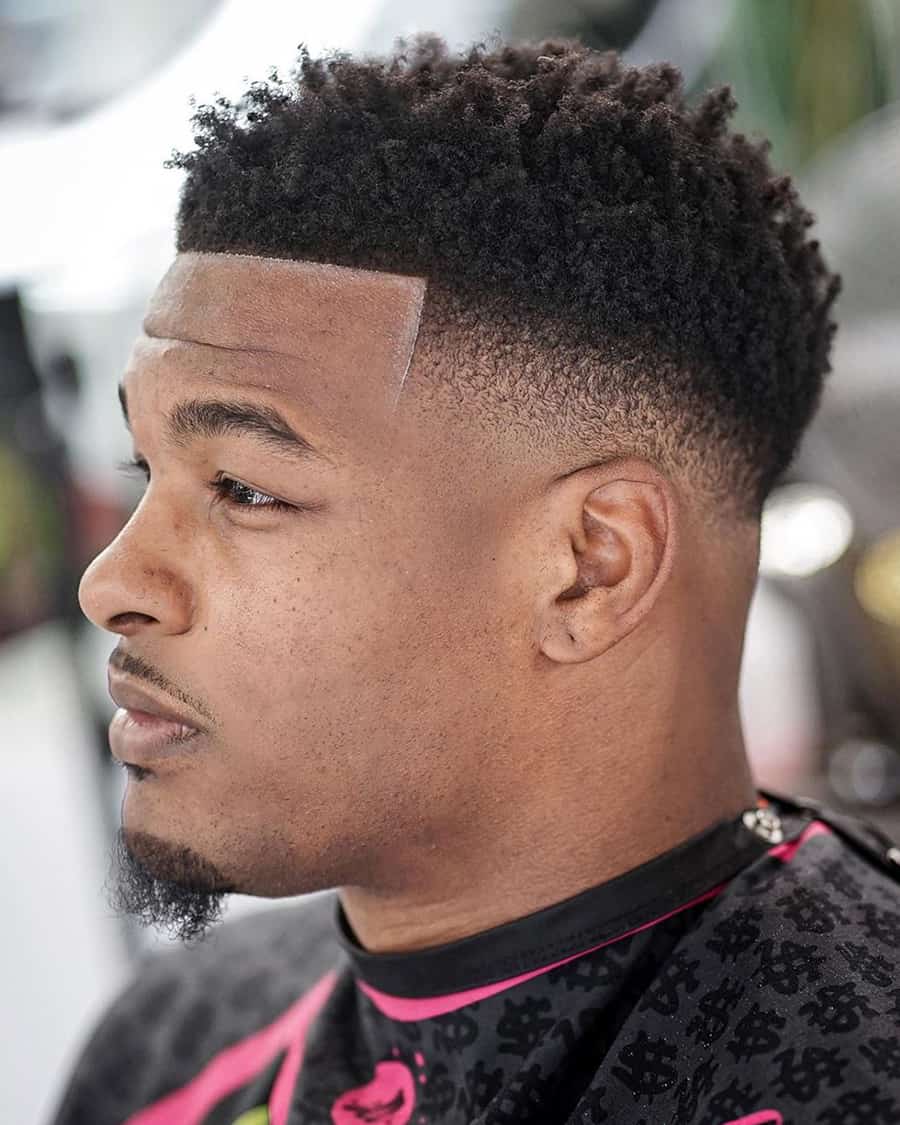
Like a high top or flat top but shorter and more wearable, this subtle low fade emphasises the hair’s natural texture and shape.
Meanwhile the goatee and stubble give this style a sense of synergy that runs from top to bottom of the face.
Quiff with low skin fade
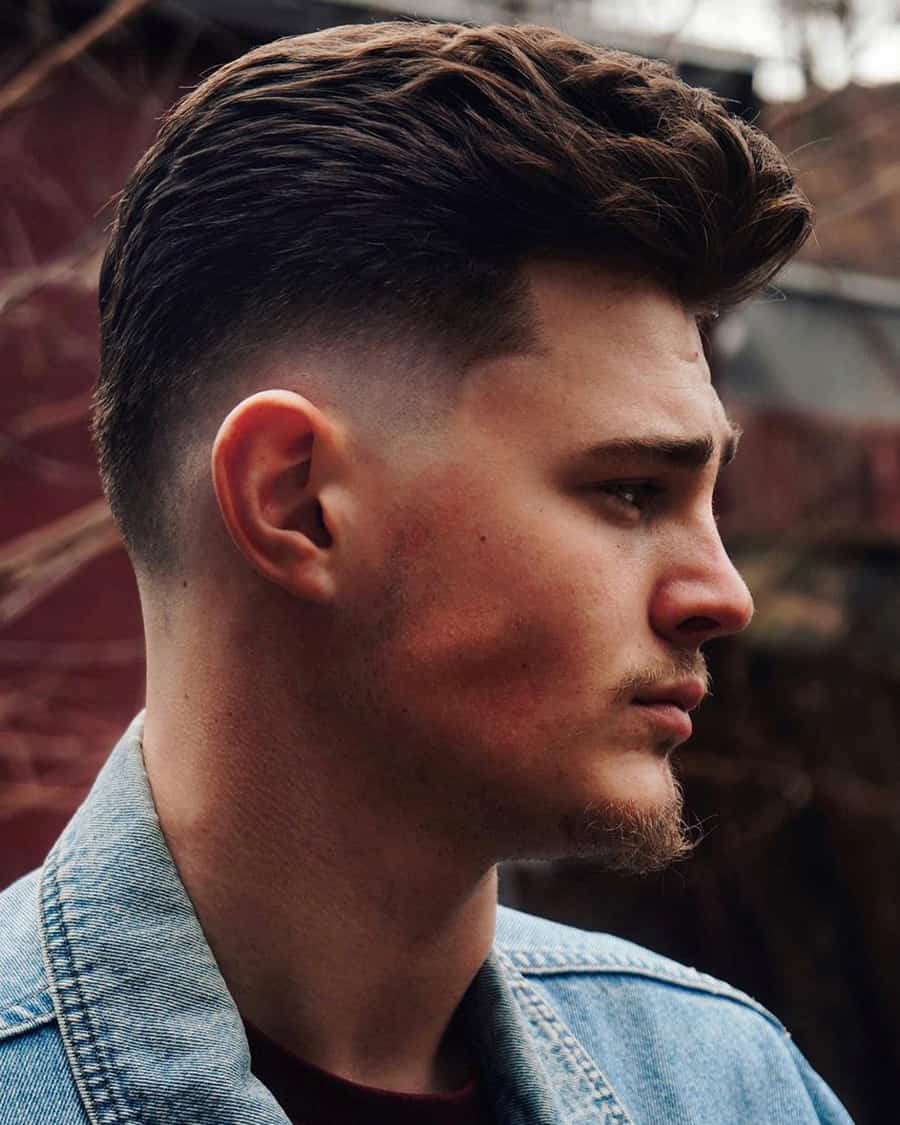
@z_ramsey
If you’ve got naturally thick hair (or fine hair and lots of it) this is a great option for you as the skin fade removes a lot of the bulk, making it easy to style.
If your hair tends to flop when it gets longer, a root boosting product and liberal dose of hairspray will be your best friends here.
